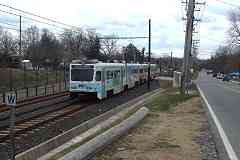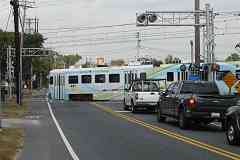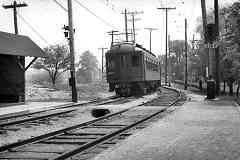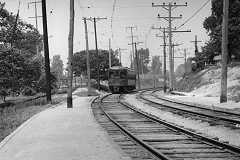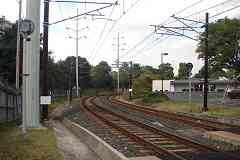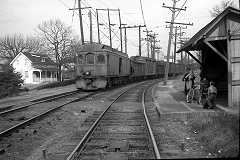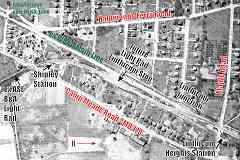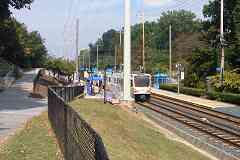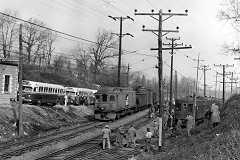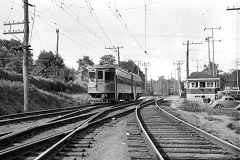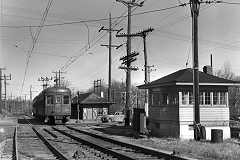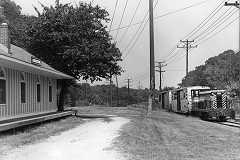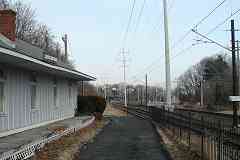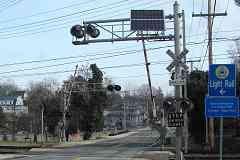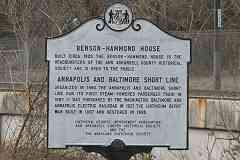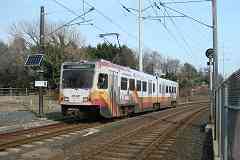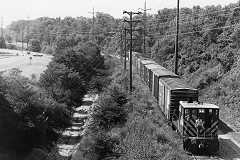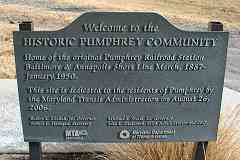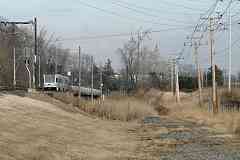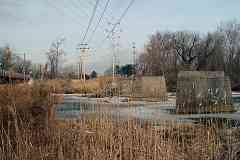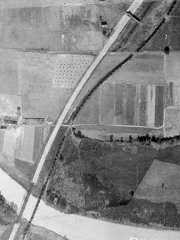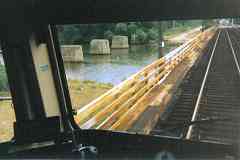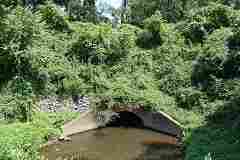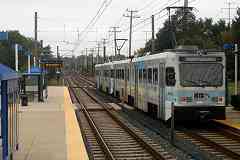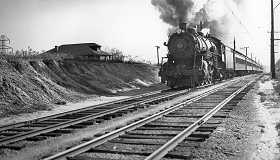|
This sign near Light RailLink's Nursery Road stop memorializes a prior
station:
"Welcome to the Historic Pumphrey Community - Home of the original
Pumphrey Railroad Station Baltimore & Annapolis Short Line March,
1887 - January, 1950.
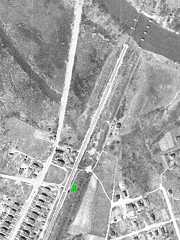
"This site is dedicated to the residents of Pumphrey by the
Maryland Transit Administration on August 26, 2006.
"Robert L. Ehrlich, Jr., Governor - Michael S. Steele, Lt. Governor -
Robert L. Flanagan, Secretary - Lisa L. Dickerson, MTA Administrator and CEO"
The green X marks the plaque's future location on a 1938 aerial. The
plaque's text suggests ASL's Pumphrey Station endured to 1950, but there
is no structure east (right) of the X where ASL's tracks had been.
To the left of the X near the ex-WB&A tracks, there do appear to be one
or two small waiting shacks that seem hardly worth memorializing.
| 